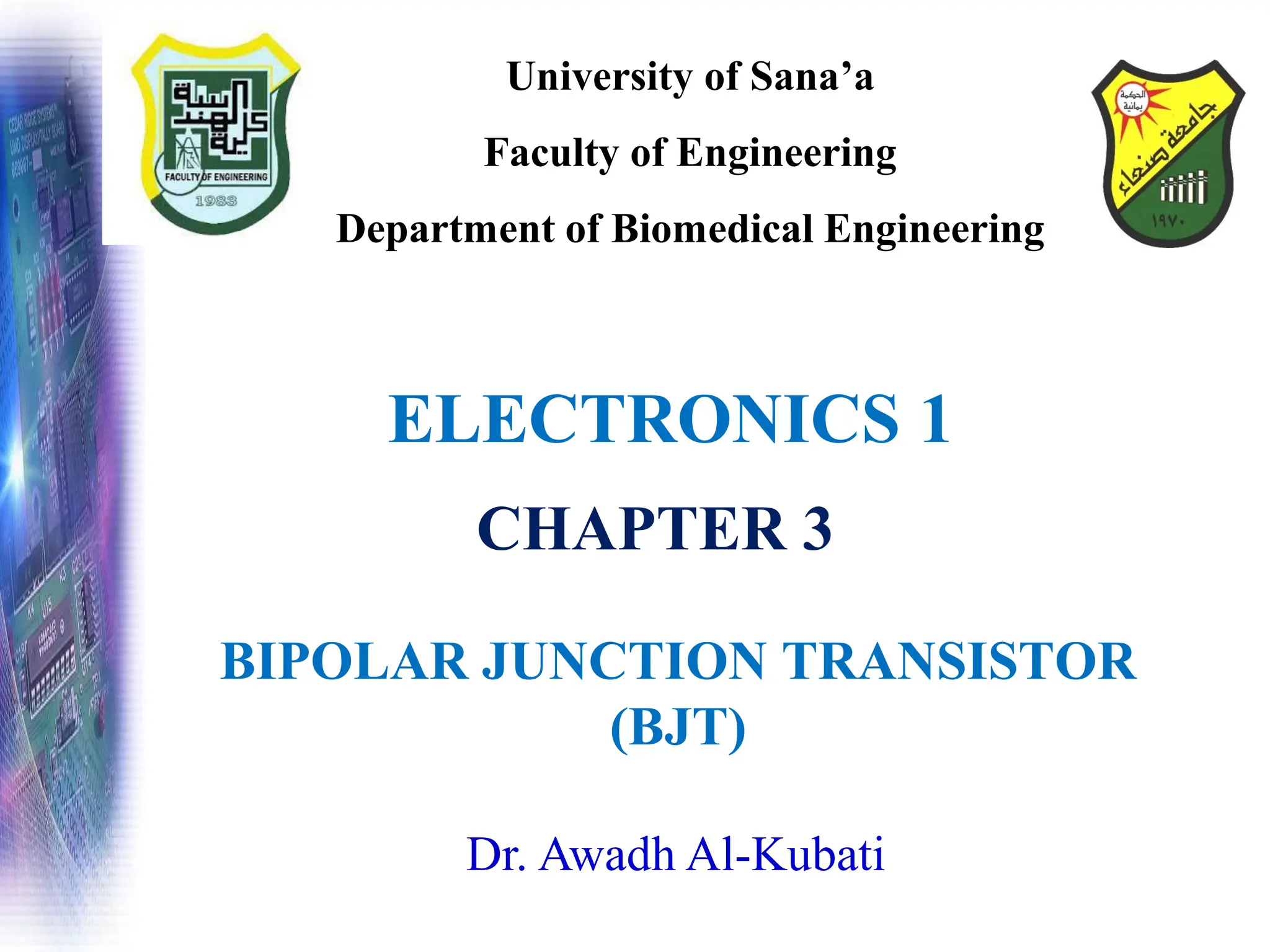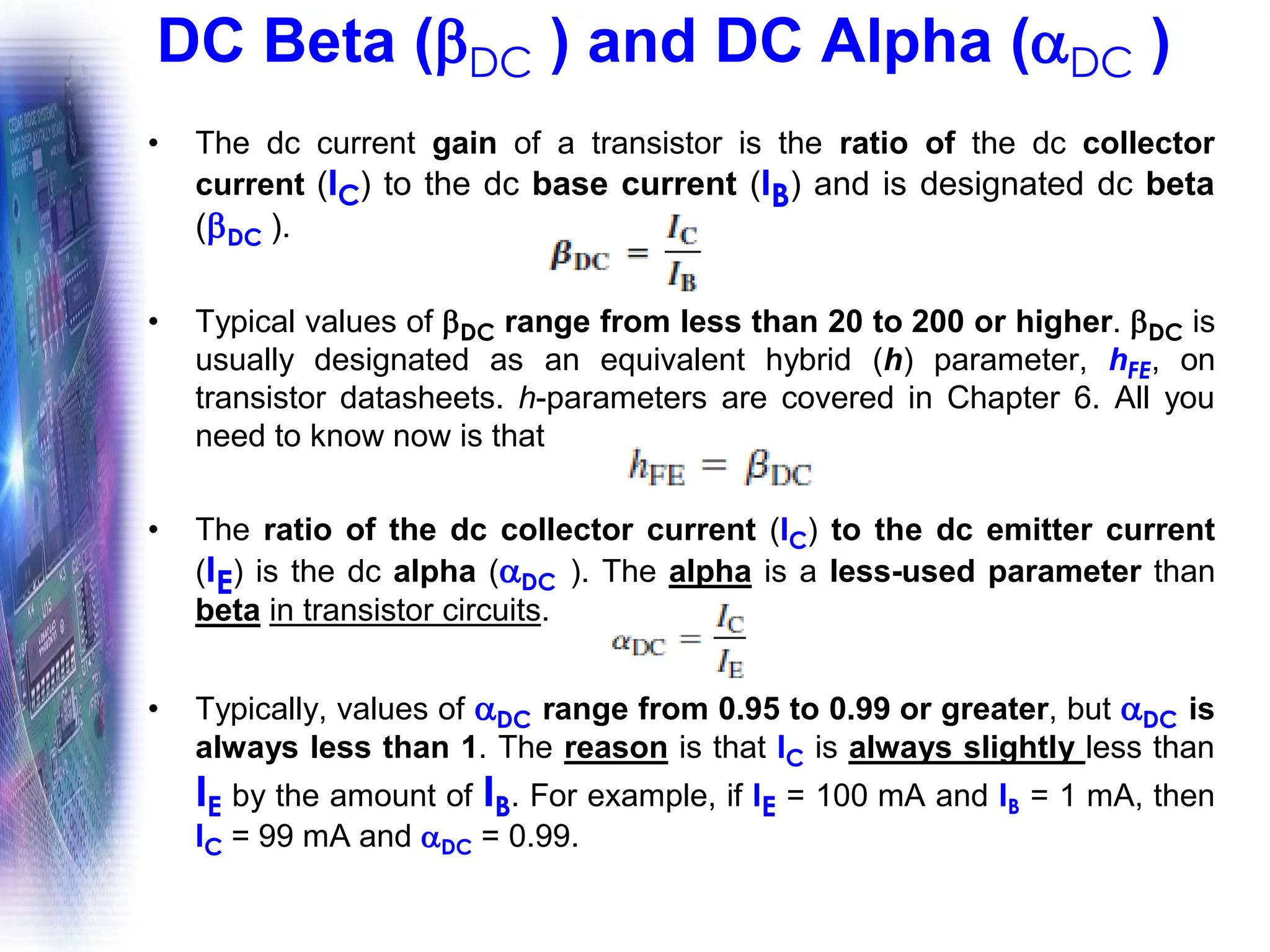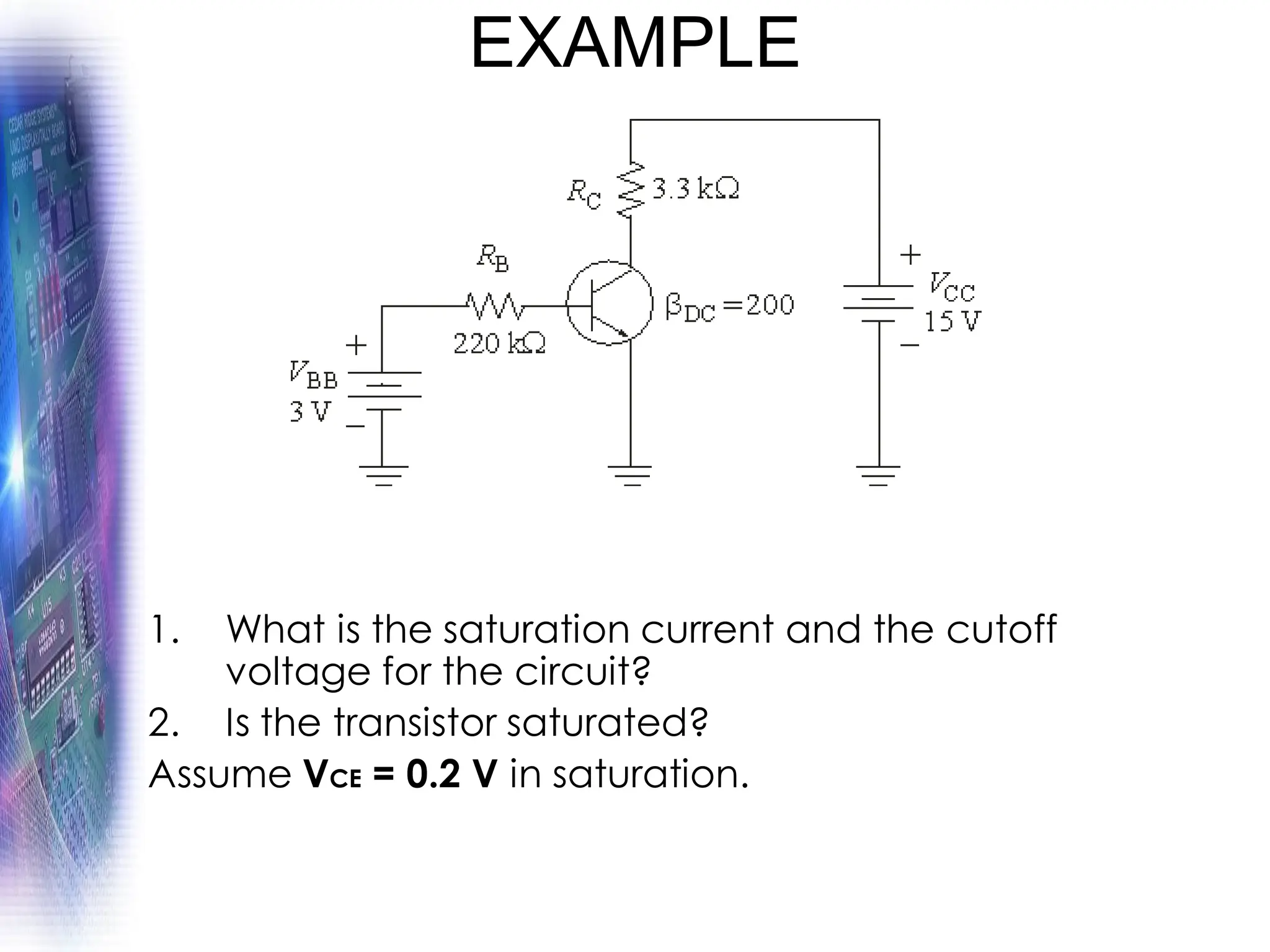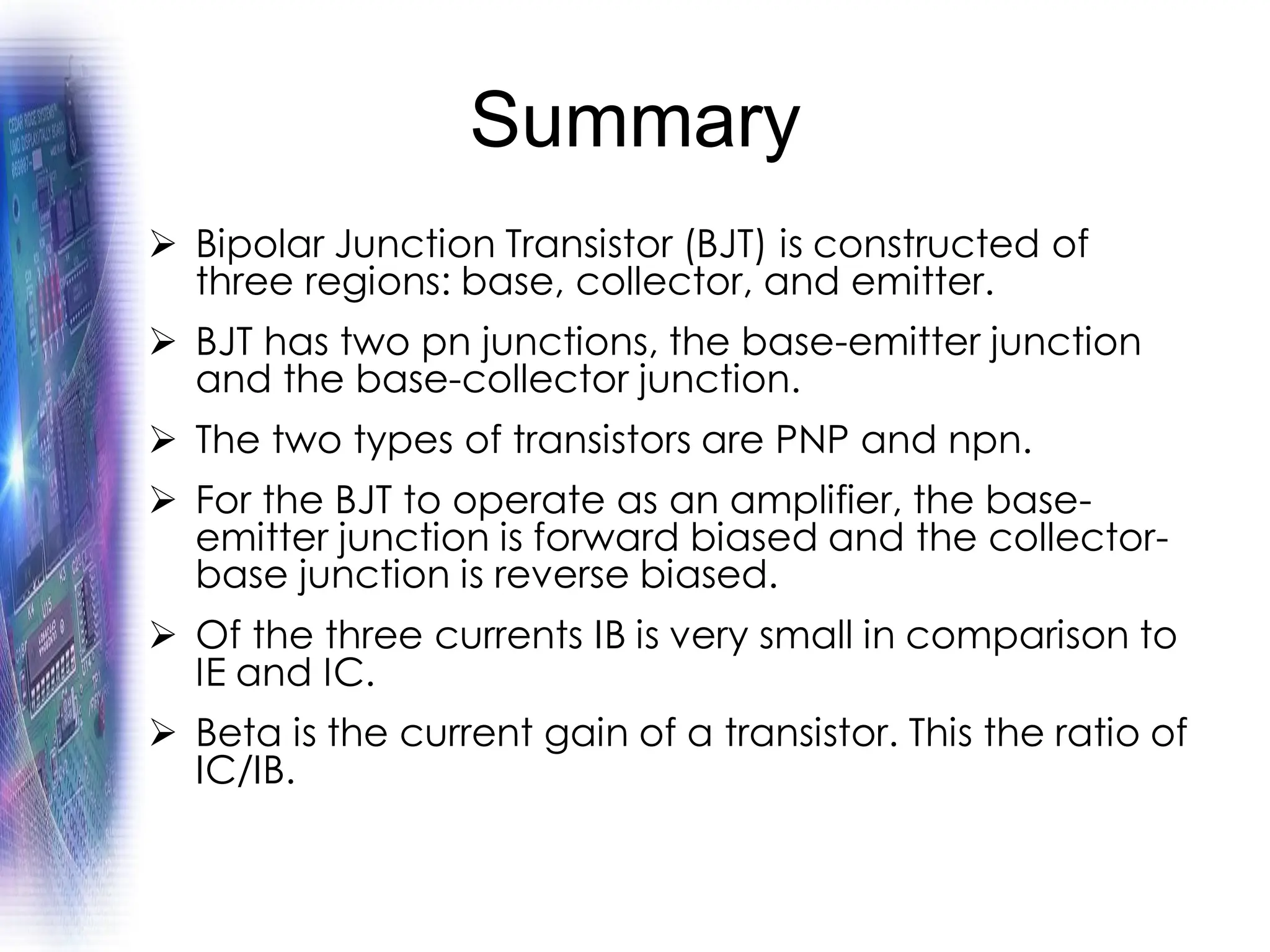- The BJT is constructed with 3 doped semiconductor regions (emitter, base, collector) separated by 2 p-n junctions.
- For operation, the base-emitter junction is forward-biased while the base-collector junction is reverse-biased.
- Electrons diffuse from the emitter into the base and are swept into the collector region, producing a current flow from collector to emitter. The base current controls the much larger collector current.











































